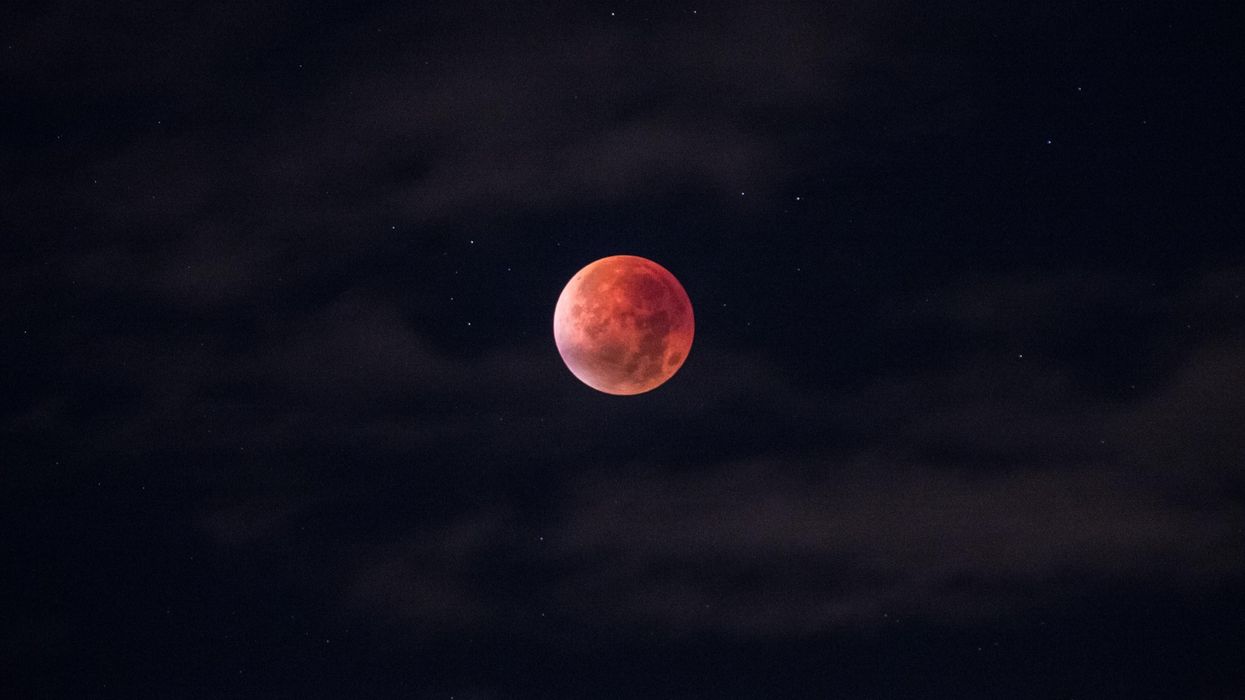A Total Lunar Eclipse Will Be Visible Across Canada This Week & Here's How You Can See It
You can watch the moon turn red! 🌕

The moon turning red during a total lunar eclipse.
A blood moon total lunar eclipse is happening in November and all of Canada can see it so keep your eyes on the sky!
The entire country will be able to watch the moon turn red during the total lunar eclipse on November 8, 2022, during the early morning hours.
It will also be visible across North America and other places around the world including South America, northern and eastern Europe, Australia and Asia, according to Time and Date.
During a total lunar eclipse, Earth's atmosphere bends sunlight and indirectly lights up the moon's surface.
When the sunlight passes through the Earth's atmosphere, colours with longer wavelengths — like orange and red — are refracted towards the lunar surface, which gives it that reddish-orange hue.
That's what makes this type of eclipse known as a blood moon.
In Vancouver, the full phase of the total lunar eclipse starts on November 8 at 2:16 a.m. PT and the maximum is at 2:59 a.m. PT.
In Calgary, totality starts at 3:16 a.m. MT and the max is at 3:59 a.m. MT.
You can see the beginning of the full phase of the eclipse at 4:16 a.m. CT and the peak of the eclipse at 4:59 a.m. CT in both Regina and Winnipeg.
In Toronto and Montreal, totality starts at 5:16 a.m. ET and the peak is reached at 5:59 a.m. ET.
The full phase of the eclipse begins at 6:16 a.m. AT in Fredericton, Halifax and Charlottetown. Then, the max happens at 6:59 a.m. AT.
In St. John's, totality starts at 6:46 a.m. NT and the max is at 6:51 a.m. NT.
What is a total lunar eclipse?
A total lunar eclipse happens when the Earth comes between the sun and the moon.
The moon doesn't have its own light but it shines because its surface reflects rays from the sun.
So, during a total lunar eclipse, the Earth blocks any direct sunlight from reaching the moon.
The sun casts Earth's shadow on the lunar surface and Earth's umbra — the darker, central part — completely covers the moon.
How rare is a total lunar eclipse?
According to the Canadian Space Agency, there are two lunar eclipses per year, on average, but there can be as many as three to five in a single year!
A total lunar eclipse, which is called a blood moon, happens in about 37% of all lunar eclipses.
Back in 2021, all of Canada was treated to a rare lunar eclipse that missed out on being a total eclipse by a sliver.
The partial phase of the eclipse lasted for three hours, 28 minutes and 24 seconds, making it the longest partial lunar eclipse in 581 years.
The longest one before that was on February 18, 1440.
How can you see a total lunar eclipse?
The Canadian Space Agency has tips for viewing the total lunar eclipse, including how you see details on the lunar surface.
Lunar eclipses are one of the most easily observable astronomical events because you don't need any equipment to see them.
All you have to do is look at the moon during the eclipse and you'll be able to see it change colour as long as there are no clouds to block the view.
If you want a better view, you can use binoculars or a telescope to see more details on the moon.
Unlike solar eclipses, it's completely safe to look at a lunar eclipse with the naked eye and no special eye protection is required!
